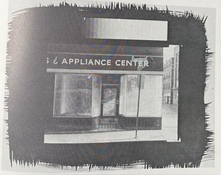Hi,
I am new to lith printing. And I have done some lith prints successfully.
But then , yesterday I was trying again but all the prints turned out to stay all white.
Cannot find out where the problem is.
Exposed the paper for 32 seconds at F8. Which was 2 stops over exposed from the base conventional exposure black and white. ( which was F8 and 8 seconds)
I still want to mention my bottle Easylith developer, diluted (1+25), was about almost 2 weeks old that i mixed max and that it had been stored in a 2 litre plastic bottle.
So there was air in the bottle for about 1 litre.
I tried a fomatone MG Classic paper in the Special edition Easylith developer.
And I tired a Forte paper in classic Easlith developer
Both papers in the 2 developers gave me a white print...
What made this happen? ?
thx
I am new to lith printing. And I have done some lith prints successfully.
But then , yesterday I was trying again but all the prints turned out to stay all white.
Cannot find out where the problem is.
Exposed the paper for 32 seconds at F8. Which was 2 stops over exposed from the base conventional exposure black and white. ( which was F8 and 8 seconds)
I still want to mention my bottle Easylith developer, diluted (1+25), was about almost 2 weeks old that i mixed max and that it had been stored in a 2 litre plastic bottle.
So there was air in the bottle for about 1 litre.
I tried a fomatone MG Classic paper in the Special edition Easylith developer.
And I tired a Forte paper in classic Easlith developer
Both papers in the 2 developers gave me a white print...
What made this happen? ?
thx



